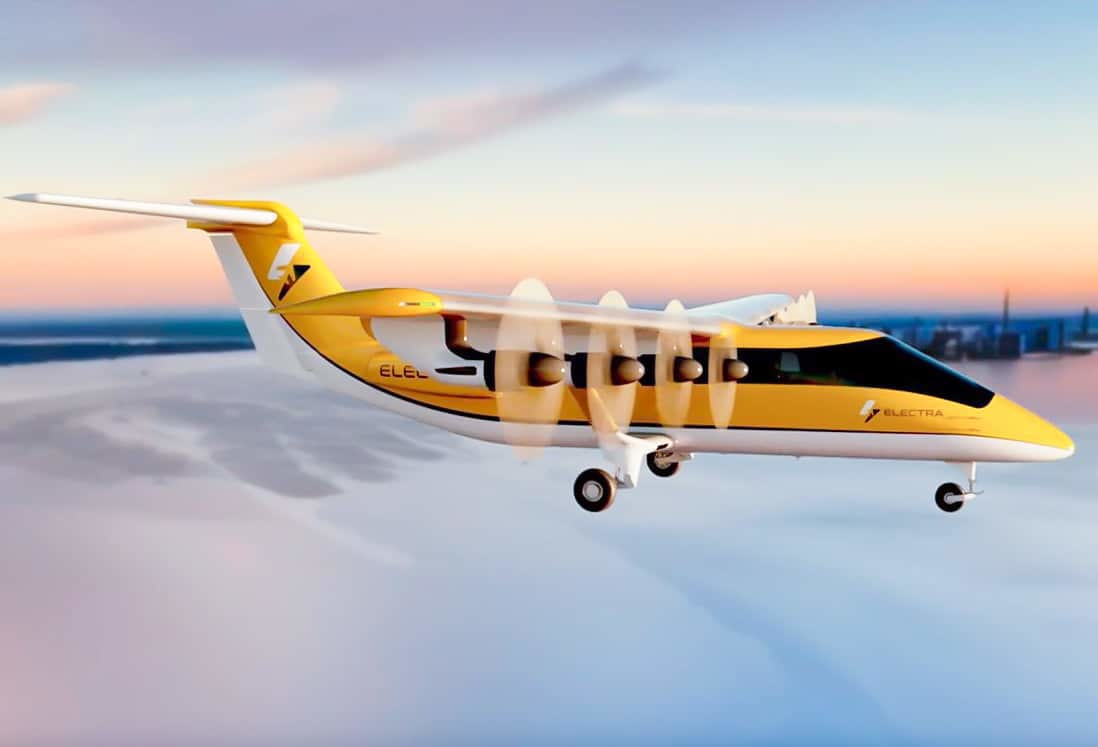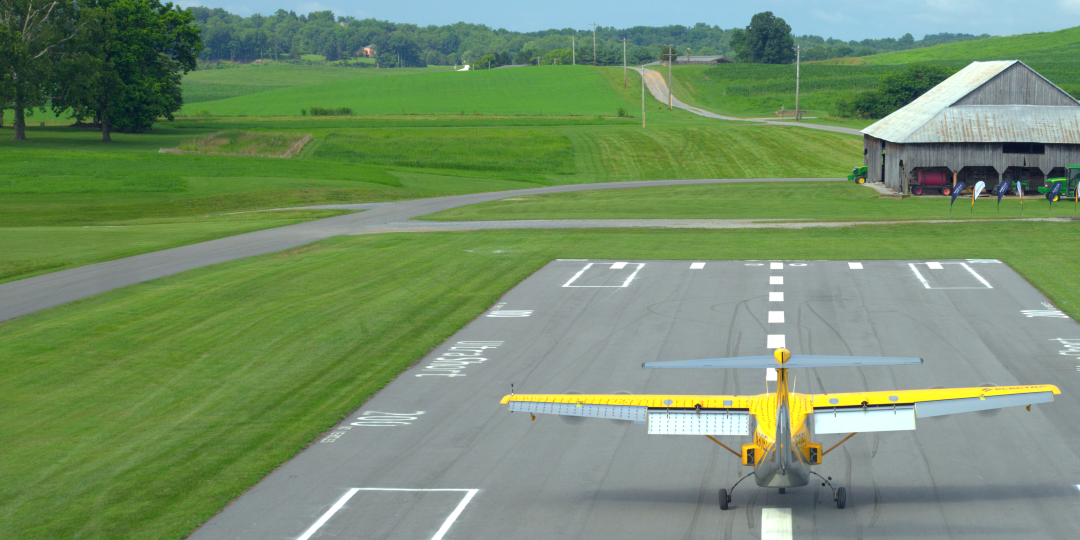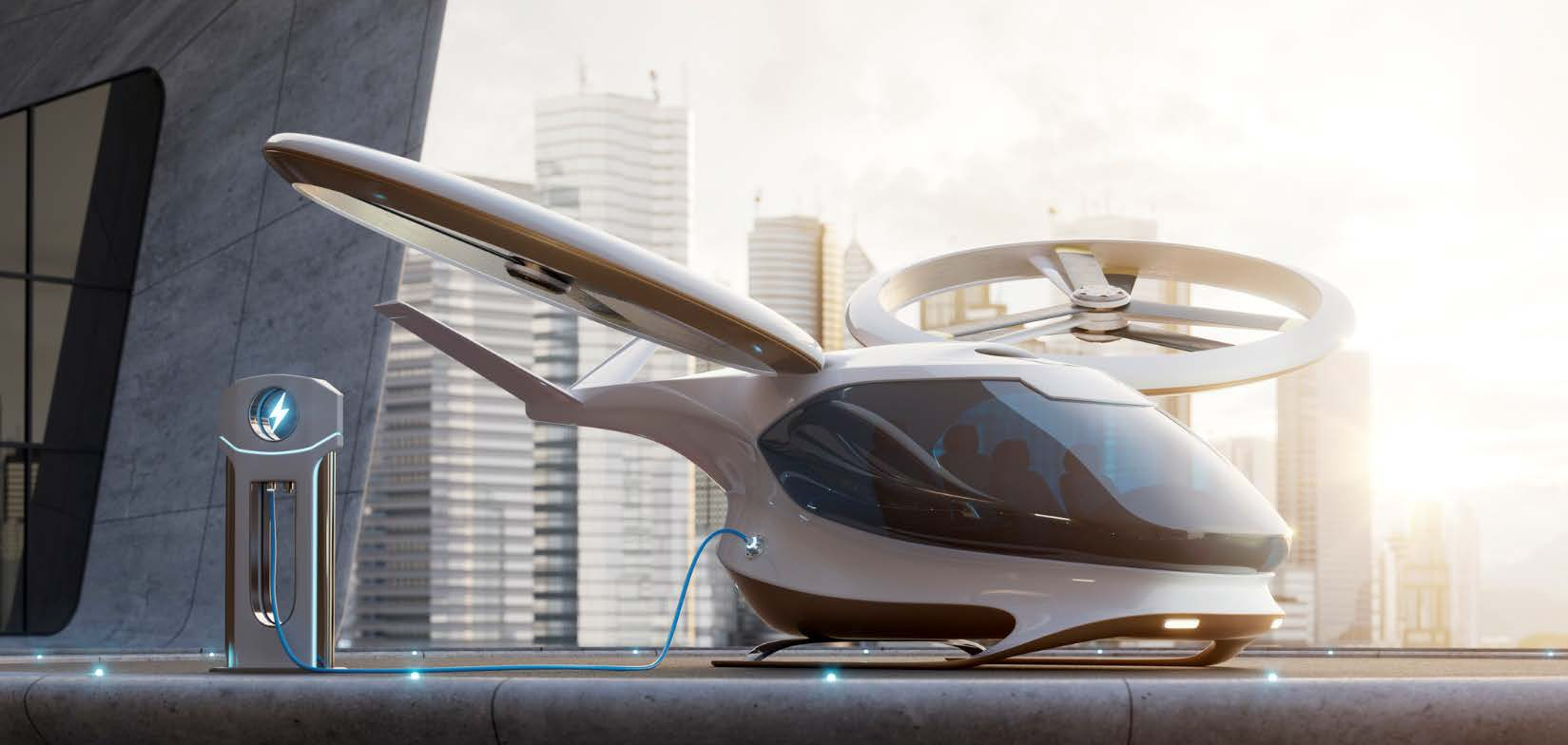Electra and Surf Air Mobility recently staged a series of public demonstration flights at Virginia Tech, proving that hybrid-electric aircraft can lift off and land in just 150 feet.
By combining blown-lift aerodynamics with distributed electric propulsion, the tests validated real-world operations from unconventional sites such as a 300-by-75-foot paved UAS runway, an access road at VTTI, and a grass field at the Virginia Tech Corporate Research Center. Each location proved that the aircraft works where conventional planes cannot operate.
Electra’s EL2 technology demonstrator accomplished these remarkably short takeoffs and landings through what engineers call “blown lift”—a system that directs airflow over the wings using eight distributed electric motors. The production EL9 aircraft scheduled for 2029 service will use four battery packs and a small turbine generator to power these wing-mounted electric motors.
The numbers tell the story. This setup delivers lift coefficients above 20, which is seven times higher than conventional aircraft wings. Wind tunnel testing at MIT confirmed the EL9 meets all FAA Part 23 safety requirements while keeping stable, predictable handling at slow speeds. You get the ultra-short performance without sacrificing safety margins.
In a routine cruise flight, the EL9 reaches 175 knots and carries nine passengers plus baggage—or up to 3,000 pounds of cargo—across 330 nautical miles. Ferry range stretches to 1,100 nautical miles, and the in-flight battery recharging means no ground charging infrastructure is required. Electra is built with fly-by-wire controls and Safe Single Pilot technology, so precision approaches need just one pilot despite having two crew stations.
 EL9 aircraft
EL9 aircraft
Where This Fits in Aviation’s Future
Electra targets the sweet spot between traditional short takeoff aircraft and electric vertical takeoff platforms. The company focuses on regional hops of 50 to 300 nautical miles—distances too short for jets but too long for efficient ground transport. A Georgia Tech study analyzing Northeast Corridor travel patterns found significant demand exactly in this range.
The economics make sense. The EL9 operates at roughly one-third the cost of helicopters or eVTOLs and runs 100 times quieter. That cost advantage opens up routes that helicopters price out of the market while avoiding the noise issues that limit eVTOL operations near populated areas.
Current competitors include Beta Technologies, which builds all-electric VTOL and conventional aircraft for logistics and medical missions. Elroy Air specializes in autonomous cargo vehicles that transition from vertical to wing-borne flight. Traditional turboprops like the Dornier 328 or ATR 72-600 need runways exceeding 1,200 meters, while the EL9 operates from under 50 meters. That difference unlocks thousands of potential routes.
Strong Commercial Interest
Surf Air Mobility secured preferred delivery positions for 90 EL9 aircraft through its partnership with Electra. Surf Air brings real operational experience through Southern Airways and Mokulele Airlines, which have transported millions of passengers across their nationwide network. Their proprietary SurfOS software platform positions them to scale Direct Aviation services once the EL9 gains certification.
Electra’s total order book includes over 2,200 commitments from more than 60 operators worldwide, representing over $8 billion in market value. Regional carrier JSX leads major customers with letters of intent for 82 EL9 aircraft, including 32 firm orders. This level of pre-commercial interest reinforces industry demand for ultra-short operations.
Louis Saint-Cyr, Surf Air’s COO and President of Hawaii Operations, explained the appeal: “What stood out to us immediately was the operational flexibility that the EL9 will enable. The aircraft will be faster to turn around, less expensive to operate, and easier to deploy”.
Military Applications Drive Additional Interest
The U.S. Army awarded Electra a $1.9 million contract to advance hybrid-electric powertrain research. The EL9’s ability to land on austere sites while supplying up to 600 kilowatts of ground power makes it attractive for logistics and expeditionary roles. That power output could replace traditional generator airlift operations entirely.
Electra partnered with Lockheed Martin’s Skunk Works division to tailor the EL9 for dual-use military and commercial applications. The collaboration focuses on digital engineering, manufacturing, and supply chain development—areas where Lockheed’s defense experience accelerates commercial certification timelines.
The U.S. military has awarded Electra over 20 Small Business Innovation Research contracts across the Air Force, Army, Navy, and NASA. This broad interest reflects how ultra-short capabilities solve real operational challenges for defense logistics.
Certification Timeline and Funding
Electra plans first EL9 flight tests in 2027, followed by FAA certification and commercial operations in 2029 under Part 23 rules. The company completed Series B funding of $115 million from Prysm Capital in April to accelerate pre-production and certification phases.
No hybrid-electric transport category aircraft has yet received FAA certification, creating regulatory challenges. However, recent progress by companies like Ampaire, which obtained FAA G-1 Issue Paper approval for its AMP-H570 hybrid system, demonstrates advancing regulatory frameworks. Electra expects to lead the hybrid-electric transport category through this certification process.
Direct Aviation Changes the Game
Eric Paterson, executive director of the Virginia Tech National Security Institute, captured what these demonstrations mean: “What Electra demonstrated at Virginia Tech was a first glimpse of how air travel will work in the near future. It was a practical demonstration of how the EL9 can integrate into everyday environments, proving it works where it needs to”.
Direct Aviation replaces the hub-and-spoke airline model with point-to-point connections using smaller, more accessible locations. Instead of driving hours to major airports, passengers could depart from underutilized airport facilities, novel airstrips, or dedicated spaces near campuses and commercial areas.
This approach addresses growing regional connectivity gaps as network airlines abandon smaller markets for larger aircraft and major hubs. The EL9’s ultra-short performance unlocks thousands of new point-to-point routes, cutting travel times while avoiding congested airports and serving communities that larger aircraft bypass entirely.
With technology now proven in real-world, non-airport environments, Electra and Surf Air Mobility are building the foundation for efficient, low-overhead air service that brings aviation closer to where people live and work.




